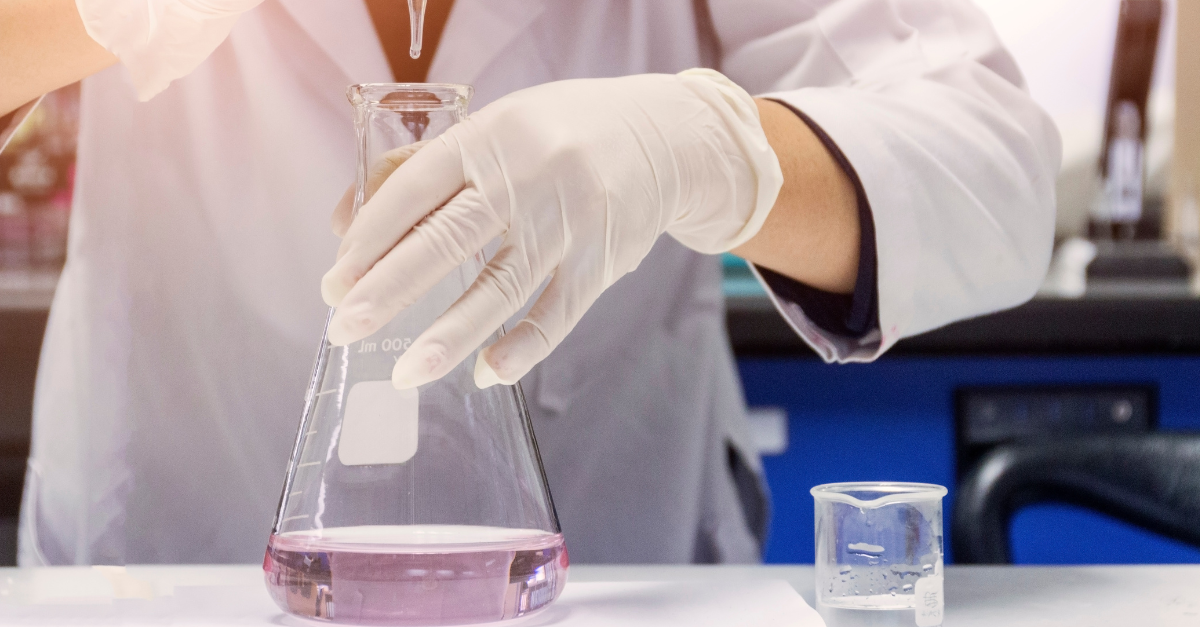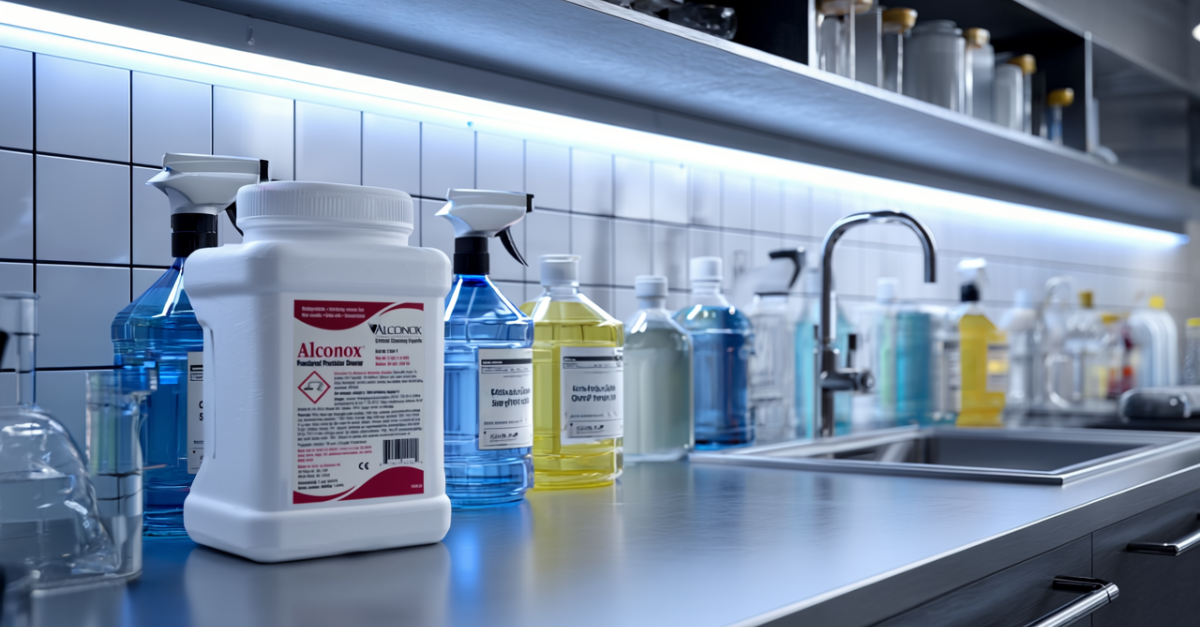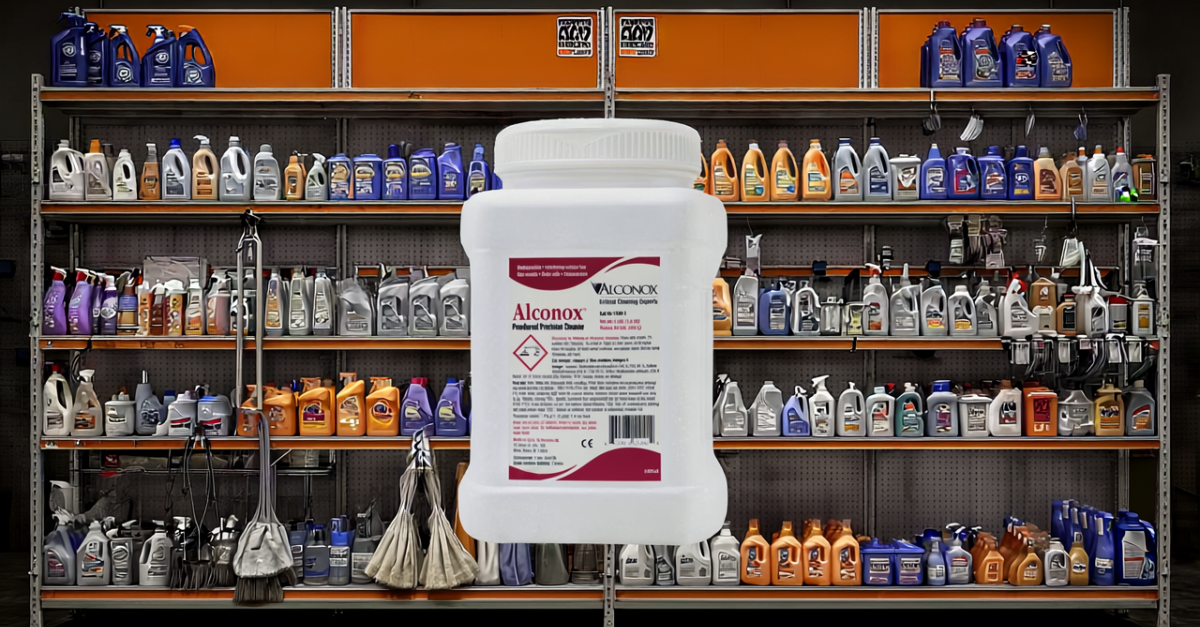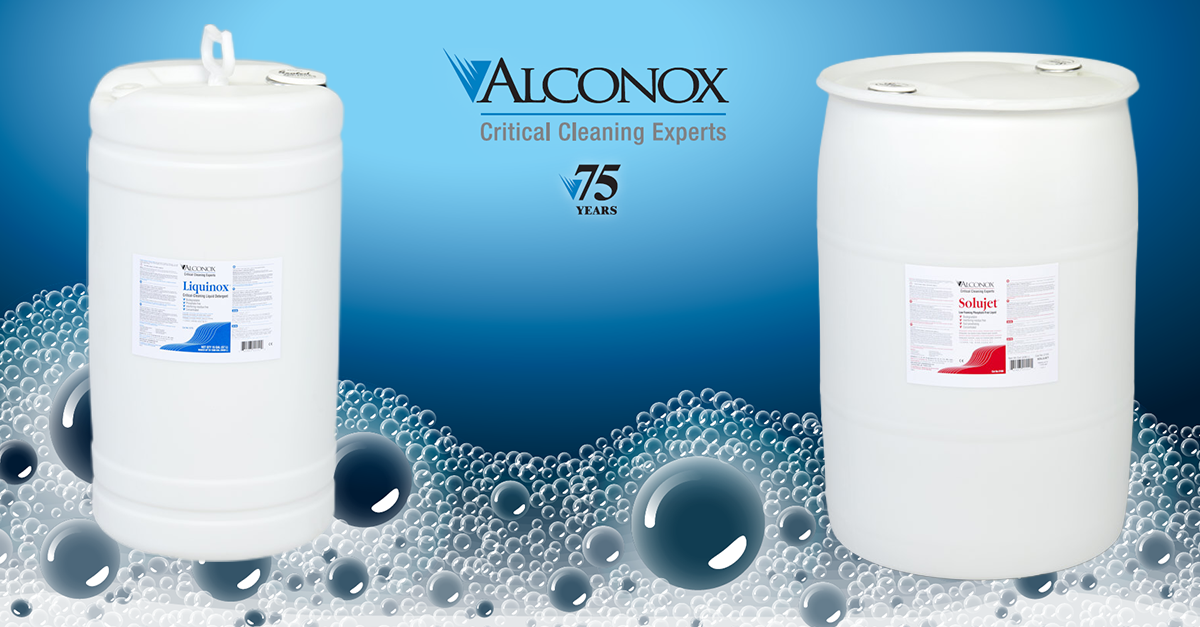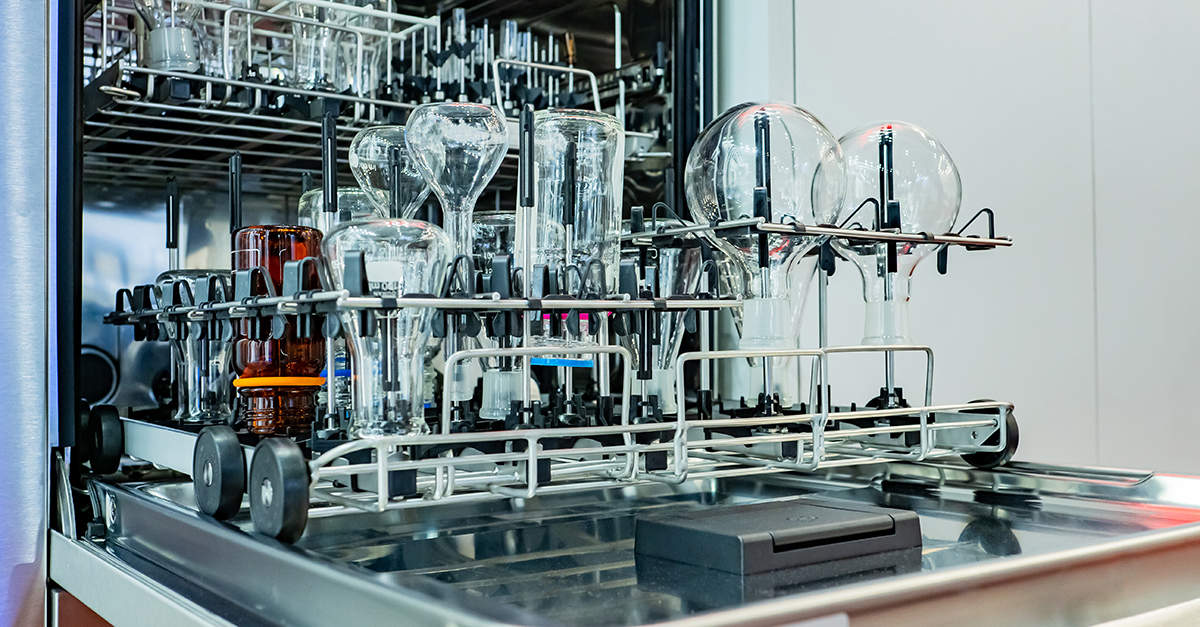
Q: Alcojet is not dispensing/dissolving in my lab washer. Do you know why this would happen?
A: When this happens to technicians, the most common cause is putting Alcojet® Low Foaming Powdered Detergent into an already wet dispenser cup. The caking effect is made worse if the Alcojet powder does not immediately dispense before running the washer. This causes the wet Alcojet powder to sit in the wet detergent dispenser cup, cake up solidly, and form a “cement” pack. When the wash cycle finally pops the dispenser door, the detergent will not dissolve. The cement or undissolved Alcojet is hydrated detergent ingredients that have become largely insoluble. Essentially phosphates and silicates that have become hydrate complexes that can be very hard to dissolve.
To fix this, scrape and wash out caked detergent (existing “cake” catalyzes making new cement, so it helps to be thorough with this), and then dry the cup off and keep the dispenser door closed when loading the washer. This will ensure that the cup stays dry during loading. Before you want to run the washer, open the cup, pour in Alcojet powder, close the cup door and promptly start the washer. This will typically solve the issue.
The following can be used a framework for an SOP and good practices:
- The first thing you need to do is completely clean the dosing cup to remove all the cement. If you leave cement behind, it can catalyze the formation of more cement. Using a little acid can help in removing the cement, or you can just scrape it out.
- Always add Alcojet detergent to a clean, dry cup. If there is any water droplets in the cup when you add Alcojet, that will start the cement forming process as you add the Alcojet. If need be, wipe the cup dry before adding Alcojet.
- Add Alcojet just before you are going to run your wash cycle. Do not add a partial load of glassware, then add Alcojet, close the cup door and then let it sit a few hours until you add more glassware and finally run the wash cycle. The dishwasher is a humid environment and will facilitate cement formation while it is sitting waiting for the wash cycle to run.
- Store the Alcojet in a dry place. Storing it under a sink that is likely to be a little wetter location can cause caking which can lead to faster cement formation in the dosing cup. Especially in hot and humid conditions you want to choose a dry place to store the Alcojet. Ideally store in a temperature controlled environment.
In very unusual cases, the washer may actually be malfunctioning and opening the cup at the wrong time. At the start of the wash cycle (usually the 2nd cycle after the prewash), you can usually hear the door pop open. If it is opening at some other time, then possibly the washer needs maintenance or any programmed cleaning cycle may need to be reviewed and fixed.
You can review our lab washer guide anytime for further recommendations and guidance on lab washer use.
To request an Alconox, LLC detergent for free, please complete the questionnaire at Get Sample. For more information about any one of our Alconox, Inc. detergents, consult the technical bulletin for each product. Or click here to access each of our detergent’s Safety Data Sheets.
Do you have a critical cleaning question for the experts at Alconox, LLC? Search TechNotes to see if it’s been answered before or Ask Alconox.
